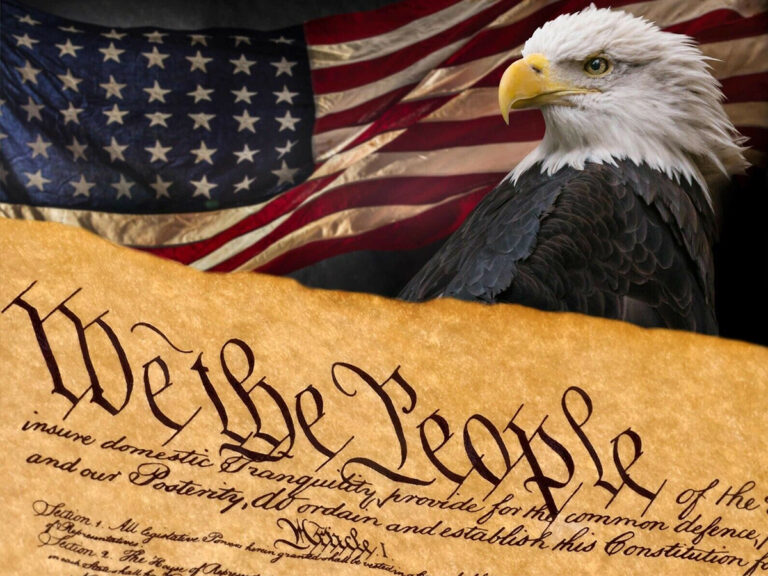
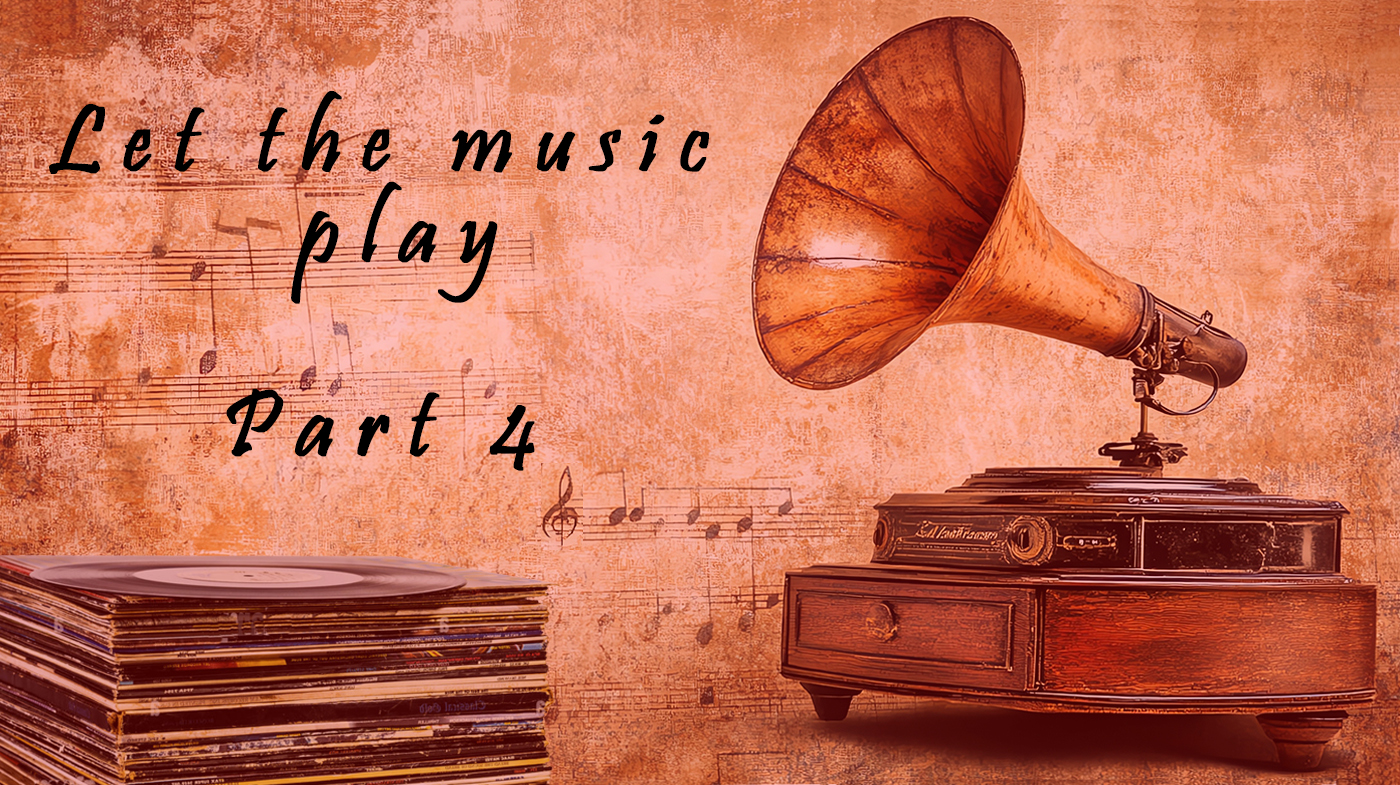
Hello and sorry about the delay in publishing the 4th installment of Listen to the Music. Rapid political, social, and cultural changes are always unsettling. Thanks for letting me vent through my “We Do Solemnly Swear” posting last week.
TJ
Before we get started, I want to recommend watching “A Complete Unknown.” While evading any of the Oscars for which it was nominated, it succeeded in keeping us mesmerized the entire evening. A definite “feel good” movie, draped in 60’s nostalgia and loaded with some of the finest music from our generation.
Instead of our planned foray into musical history, (for now) I want to draw your attention two a couple of interesting musical phenomena.
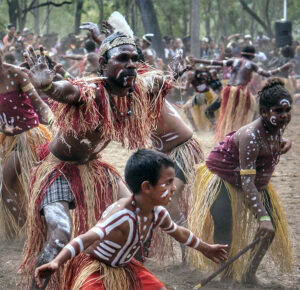
Every culture has developed its own unique blend of song, dance and instrumental style(s). Nation States incorporate anthems into their very identity while every individual/human that has walked the earth has some type of relationship with music. Even if it was the melodic clip-clop of a horse or the village women humming to the sounds of moving water over rocks as they washed their clans clothing. When exposed to unfamiliar music from faraway lands we are able to feel the beat, absorb some of the emotions and appreciate it’s beauty. Establishing a bond, even if temporary, with those we might not otherwise have anything in common.
One such experience I had was in the Australian Outback near a town called Laura, less than 300 miles from the Great Barrier Reef in northern Queensland. A few hundred of us were attending an Aboriginal Festival in 1988. My family was touring the continent and just happened upon it. We were treated to an hour or so of traditional indigenous music and dance in full native costume. Without understanding a word of their language, relying only melody, tone, expression, beat, pace and movement, I felt I took away at least a small understanding of their journey. Notoriously difficult but rich in traditions proudly passed on to younger generations.
American Music World Wide
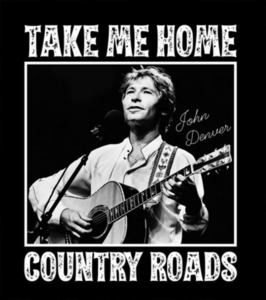 There’s no question that American music is immensely popular in many countries around the world and has a significant impact on global music culture. The global marketing of pop, rock, hip-hop, R&B, country, jazz, blues and other genres is highly organized and sophisticated. So it comes as no surprise that contemporary artists like Taylor Swift, Beyonce and others are able to penetrate the music market in numerous countries on every continent, enjoying tremendous popularity. What did come as a surprise to me, just the other day as a matter of fact, was the unbelievable worldwide impact of one song written in 1970 by one Henry John Deutschendorf, Jr., known by his stage name- John Denver. Actually the song, “Take Me Home, Country Roads,” was a collaboration by Denver with Bill Danoff and Taffy Nivet, a young couple inspired by the rural countryside of Maryland. They thought West Virginia sounded better even though they had never been there. The three of them spent 3 hours refining the song in December and released it through RCA in early 1971. Listening to the TODAY-EXPLAINED podcast (link…need account) aired by NPR and Vox the day before Christmas. I was mesmerized by this story.
There’s no question that American music is immensely popular in many countries around the world and has a significant impact on global music culture. The global marketing of pop, rock, hip-hop, R&B, country, jazz, blues and other genres is highly organized and sophisticated. So it comes as no surprise that contemporary artists like Taylor Swift, Beyonce and others are able to penetrate the music market in numerous countries on every continent, enjoying tremendous popularity. What did come as a surprise to me, just the other day as a matter of fact, was the unbelievable worldwide impact of one song written in 1970 by one Henry John Deutschendorf, Jr., known by his stage name- John Denver. Actually the song, “Take Me Home, Country Roads,” was a collaboration by Denver with Bill Danoff and Taffy Nivet, a young couple inspired by the rural countryside of Maryland. They thought West Virginia sounded better even though they had never been there. The three of them spent 3 hours refining the song in December and released it through RCA in early 1971. Listening to the TODAY-EXPLAINED podcast (link…need account) aired by NPR and Vox the day before Christmas. I was mesmerized by this story.
How it is a success and why all over the world. I find this fascinating.
Country Roads was an immediate hit reaching #1 on the Cash Box Chart, whatever that is and #2 on the Billboard Hot 100. So, while this song became a defining track in John Denver’s career its real strength lied in its long-term integration into the musical fabric of nations around the world. It had universal appeal. Why?
It is altogether understandable why West Virginians would adore Country Roads even if the Blue Ridge Mountains and Shenandoah River barely traverse the state. A source of irritation to some. But why Sri Lanka? Why the Philippines?
In West Virginia: Despite its somewhat coincidental reference to the state, “Take Me Home, Country Roads” has become synonymous with West Virginia. In 2014, it was officially designated one of the state’s four official anthems. The song is a beloved symbol of state pride and is played at many state events, including sports games, festivals, and WV university graduations.
I know. I know. Not everyone likes or appreciates John Denver. He’s a bit of a curmudgeon. Somewhat corny. But he also wrote “Rocky Mountain High”…in Colorado. My new adopted state. I suggest you revisit the lyrics to this song. Click on the tab at the end of this section. They are pretty cool. He has an angelic voice and, unlike any of us, was invited by Deng Zhou Ping himself to visit China. It seems Deng liked what Denver had to say about a rising China at the Kennedy Center in Washington DC as part of a State Visit in 1979. Deng was now a fan as would be tens of millions of Chinese citizens in the years to come. Not just Chine but all over Asia, the Pacific, South America, parts of Europe and Africa as well as Slavic countries like Poland and Ukraine. “Take Me Home, Country Roads” transcends politics and is one of the most globally beloved songs either in English or numerous other languages into which it has been translated.
You can listen to the Today-Explained podcast but here is my take. Sarah Morris, an Associate Professor of English at West Virginia University wrote the definitive book on the success of Country Roads. In essence Country Roads creates an imaginary landscape that’s flexible and can be applied to any home anywhere in the world. All countries have roads and those roads are used, in part, to take people home. Where the heart is. Everyone has an existential longing, a deep universal feeling, of wanting to belong to a place and to each other. That is what gives Country Roads it’s power.
Some have a technical, perhaps more cynical explanation as to Country Road’s phenomenal reach:
Because the three co-writers knocked out the final version in around 3 hours, I do not believe they had time to analyze and incorporate the above-mentioned tactics into Country Roads. It just worked out that way. Therefore, I do not feel manipulated like I did after seeing the Lion King at the Pantages in Los Angeles sometime in 2000. I was of course pretty teary during the breathtaking opening procession featuring the song the “Circle of Life”. The performers, dressed as animals and adorned in stunning costumes and puppetry, make their way to the stage from the back and sides of the theater, creating the illusion of a living savanna and an African sunrise. Following the performance, Devon, a friend of my daughter, informed me that the emotions I felt were generated to a large degree with special theatrical “tricks”. The music is played at increasing louder volume, incorporating pounding drums, while the lights are slowly brightened as the beautiful sunrise unfolds before the audience. All designed to evoke deep, immersive emotions. Bingo.
Protest Songs- Vietnam, Jazz & Civil Rights
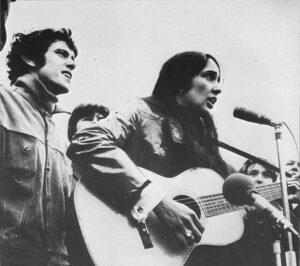
“How many times must a cannonball fly?…”
Protest songs have long been a part of American tradition. Before “Blowin in the Wind”, or “We Shall Overcome”, Colonists were singing the “Liberty Song”, “Free America” or a reconstituted “Yankee Doodle Dandy”.
Driven by the Civil Rights and Anti-Vietnam War movements in the 1960’s, several protest songs made their way into not only folk but popular rock music as well. A few you may remember:
The anti-war movement attracted a broad coalition of students, veterans, academics and religious groups. Its goal was straightforward: End the war in Vietnam and bring our soldiers home. There was no broad legislative agenda. The Civil Rights movement on the other hand was deeply rooted in community involvement and had direct personal stakes for its participants. It focused not only on growing their cause but also on meaningful legislative changes regarding racial equality in the work place and in the larger society as well. Two memorable landmark achievements would be the Civil Rights Act of 1964 and the Voting Rights Act of 1965.
Wait a minute, hold on Tolejko. There you go again getting sidetracked. What does this have to do with music? Fair enough. I will get right to it but thought we needed a little background.
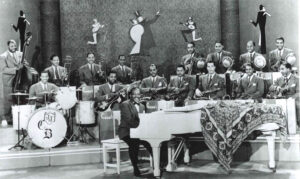
Until recently I had not drawn a parallel between Jazz and the Civil Rights Movement. A recent book titled: “Jazzmen” by Larry Tye and a subsequent podcast on *KQED’s-The Forum brought it to my attention. I urge you to give it a listen (link) or perhaps read the book.
In a nutshell:
While attending the Berlin Jazz Festival in 1964 Martin Luther King Jr. let it be known that “Jazz is triumphant music.” “Much of the power of our Freedom Movement in the United States has come from this music. It has strengthened us with its sweet rhythms when courage began to fail. It has calmed us with its rich harmonies when spirits were down. And now, jazz is exported to the world.”
Jazz reflected the values of freedom and equality while providing a voice for black musicians.
Beginning in the 1920’s right up through the 1950’s and 60’s, many great jazz musicians emerged. Among them are three that rose to unprecedented fame not merely within the black community but among white America. They were Count Basie, Duke Ellington and Louis Armstrong. Respectively known as The Count, The Duke and Satchmo. Great talent trumps race.
In 1927 Duke Ellington, as the renowned bandleader at the Cotton Club in Harlem, extended his reach far beyond these white audiences with his national radio show. By 1929 the Duke was a national figure. It was the beginning of the Depression so even if his fans could not afford to buy his records, they could listen to him on their radios. The Duke along with Count Basie and others were in fact leading a quiet revolution when it came to race relations. White men who would otherwise not allow a black man to cross his threshold wooed their sweethearts with jazz music. Women who would cross the street to avoid contact with a black man, in the privacy of their own home would kick off their shoes, tap their toes and let loose to the music of the Count. Jazz was heard in living rooms everywhere. It opened American ears and souls to the notion of black genius and blacks deserving of equal rights.
All three shared the sense that they could use their celebrity to make a statement beyond the music world.
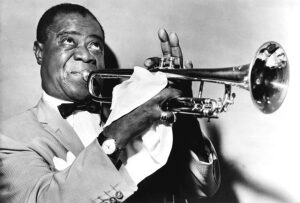 One example is Louis Armstrong inserting himself into the controversy surrounding integrating Central High School in Little Rock, Arkansas. It was 1957 and the Governor was not about to let the Little Rock 9 anywhere near that school. President Eisenhower did nothing to protect the 9 kids trying to attend this all-white school. While most black and white leaders were hesitant to get involved, the Satchmo took action. Summoning a reporter to his hotel room, Armstrong in no uncertain terms told the reporter in very explicit terms what he thought about what the Arkansas Governor was doing. He called the Governor a “motherfu*#&r” which was watered down through media censors to “an uneducated plowboy”. He went on to call our war hero president, Ike, gutless. Perhaps it was coincidence, but shortly after Armstrong’s comments made headlines around the nation and the world, Eisenhower sent in Federal troops to protect these kids.
One example is Louis Armstrong inserting himself into the controversy surrounding integrating Central High School in Little Rock, Arkansas. It was 1957 and the Governor was not about to let the Little Rock 9 anywhere near that school. President Eisenhower did nothing to protect the 9 kids trying to attend this all-white school. While most black and white leaders were hesitant to get involved, the Satchmo took action. Summoning a reporter to his hotel room, Armstrong in no uncertain terms told the reporter in very explicit terms what he thought about what the Arkansas Governor was doing. He called the Governor a “motherfu*#&r” which was watered down through media censors to “an uneducated plowboy”. He went on to call our war hero president, Ike, gutless. Perhaps it was coincidence, but shortly after Armstrong’s comments made headlines around the nation and the world, Eisenhower sent in Federal troops to protect these kids.
Just letting their music speak for itself was not enough. All 3 of these guys walked the walk. They did all they could to tear down Jim Crow.
Speaking of Louis Armstrong, his rendition of “Hello Dolly” not only made the musical of the same name a much larger success than anticipated. It also knocked the Beatles off their number 1 spot on the Billboard Charts.
Pullman Porters
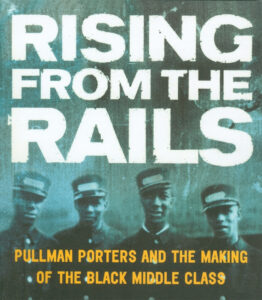 Regardless of their popularity nationally (and internationally) through radio and regional acceptance in the north and west, once black musicians crossed that Mason-Dixon line all bets were off. The south was deeply segregated during this period and Jim Crow laws strictly enforced racial barriers.
Regardless of their popularity nationally (and internationally) through radio and regional acceptance in the north and west, once black musicians crossed that Mason-Dixon line all bets were off. The south was deeply segregated during this period and Jim Crow laws strictly enforced racial barriers.
Black musicians often performed at venues designated for white audiences. However nonsensical, after being cheered at a club, black entertainers were not allowed to stay in a hotel designated for “white people.”
Going to the “wrong” restaurant or hotel to get a meal and a room could lead to them being berated, beaten or worse. So those like the Duke, the Count and Satchmo when performing in the south would rent a private Pullman Sleeping Car. So, after performing in let’s say Atlanta they knew that afterwards they could go back to their private sleeping car for a great meal, some rest and equally important, safety. Afterwards, later in the evening they would give a private jam session/concert to the porters.
*KQED is an NPR affiliate radio station out of San Francisco and one of the most listened to radio stations in the country.
Got a minute? Let me take you from the pretty interesting, musically related, historical truths above, to a personal reality you might say is a little weird.
Musical False-Memories. My apologies to the artists.
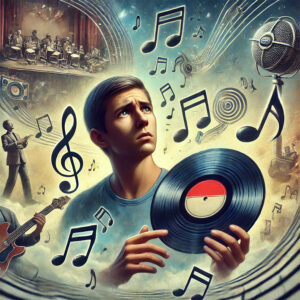 Inevitably, on occasion I discovered or was told that some of the lyrics I have been mouthing to many of my favorite songs are incorrect. Apparently, if I am not certain I fake it or make up the words as I go. It saves time and I usually forget to find out what the correct words are as soon as the song is over. That’s embarrassing. Truth be told there are numerous songs I like but cannot remember the lyrics to, probably most of them. But I love the melodies and the way they make me feel so, I if lose part of the message, so be it. Here are but 2 examples. One would be the 1996 Dave Mathews Band song “Crash into Me”. Around 5-10 years ago my daughter Natalie heard me singing the Chorus and said that the correct wording was “Crash into Me” as the title clearly states. I had been saying, “cry serenity”. Natalie, by the way, can remember just about every word to every song or musical she has ever heard. Two songs that demonstrate her special talent are Billy Joel’s “We Didn’t Start the Fire” written in 1989 (Harry Truman, Doris Day, Red China, Johnnie Ray etc.) and the 1997 Chubbawamba Song, “Tubthumping” . “He drinks a whiskey drink, He drinks a Vodka drink, He drinks a Lager drink, He drinks a cider drink, He sings the songs that remind him of the good times, He sings the songs that remind him of the better times”. Not easy.
Inevitably, on occasion I discovered or was told that some of the lyrics I have been mouthing to many of my favorite songs are incorrect. Apparently, if I am not certain I fake it or make up the words as I go. It saves time and I usually forget to find out what the correct words are as soon as the song is over. That’s embarrassing. Truth be told there are numerous songs I like but cannot remember the lyrics to, probably most of them. But I love the melodies and the way they make me feel so, I if lose part of the message, so be it. Here are but 2 examples. One would be the 1996 Dave Mathews Band song “Crash into Me”. Around 5-10 years ago my daughter Natalie heard me singing the Chorus and said that the correct wording was “Crash into Me” as the title clearly states. I had been saying, “cry serenity”. Natalie, by the way, can remember just about every word to every song or musical she has ever heard. Two songs that demonstrate her special talent are Billy Joel’s “We Didn’t Start the Fire” written in 1989 (Harry Truman, Doris Day, Red China, Johnnie Ray etc.) and the 1997 Chubbawamba Song, “Tubthumping” . “He drinks a whiskey drink, He drinks a Vodka drink, He drinks a Lager drink, He drinks a cider drink, He sings the songs that remind him of the good times, He sings the songs that remind him of the better times”. Not easy.
Another song going way back to 1966 was “I Fought the Law” by the Bobby Fuller Four. I actually settled on some words that sounded okay but made no sense. Following “I left my baby and I feel so bad” I would say “I guess my “brashers wrun”. Well sometime in the late 1980’s a good friend and business partner, Mike Pariseau, and I were driving from Chicago’s O’Hare airport on the way to the Convention Center where we used to exhibit. That song came on the radio and I flat out asked him what the correct words were as I could not make them out. Never could. He nonchalantly said: I left my baby and it feels so bad, guess my race is run. My rendition is phonetically correct don’t you think?
I just remembered another- “The Christmas Waltz” sung by Frank Sinatra. The second verse begins with:
It’s that time of year when the world falls in love
Ev’ry song you hear seems to say “Merry Christmas,
I substituted the word French for world for some reason and it stuck for me and my wife, Deborah. When the French fall in love. GO figure.
There are many instances of me “misremembering” lyrics to songs. As it turns out this is a common phenomenon. Tied to how our brains process and store information. Sometimes we mishear lyrics the very first time we listen to a song, and our brain fills in the blanks with what sounds logical. “I guess my “brashers wrun”. Logical? To me it was. Once we start singing it that way, it sticks. Perhaps you are one of the many that hear “There’s a bathroom on the right” instead of “There’s a bad moon on the rise” in Creedence Clearwater Revival’s Bad Moon Rising. C’mon admit it. Other possibilities for misremembering lyrics to songs include:
Lazy Musicians? Or is it me?
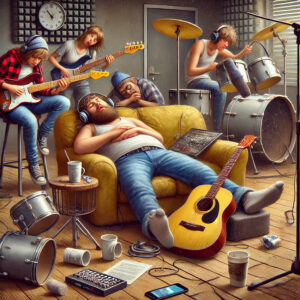
I take comfort in knowing I am not alone. But to get a little payback perhaps over the years I have noticed a few instances where musical artists were either short on time, desperate for rhyming words or just plain lazy and settle on less than ideal lyrics. A few that I remember:
“It Ain’t Me Babe” by the Turtles (1966)- Go away from my window. Leave at your own chosen speed. I’m not the one you want, babe. I’m not the one you need. Not great but since it was actually written by Bob Dylan I will accept it and partially withdraw my objection.
***https://www.youtube.com/watch?v=OgtQj8O92eI I watched a YouTube video in order to verify my claims. You have to see it. It’s black and white with 4 or 5 go go dancers with cowboy hats holding pistols dance around in the background.
________________
Late to the Dance
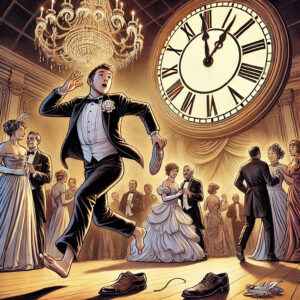 There have also been numerous occasions when popular music, the music of the day passed me by.
There have also been numerous occasions when popular music, the music of the day passed me by.
Take for instance:
The blind tenor as he was called by some, Andrea Bocelli. Or The Cranberries I apparently heard for the first time a couple of years ago. Well the one song I thought had a great sound anyway- “Dreams”. They have been around since 1989 and I of course have heard Linger (and you had to, and you had to let it linger). But somehow Dreams eluded me. A great dance song. https://www.youtube.com/watch?v=Yam5uK6e-bQ Up until she goes into what sounds like yodeling. Not that there is anything wrong with yodeling.
The lead singer died in 2019 from alcohol intoxication. That list is long indeed.
Coldplay and Chris Martin is another example. They were popular for probably seven or eight years before I cam upon them. While riding the Nordstrum Elevator in Santa Barbara I heard a melody I absolutely loved. I heard it again several times and asked a few people, humming the tune. Good luck with that. I finally asked Howard and he solved the mystery: “Clocks” by Cold Play. Today, there are apps for that. I thought I was probably, the last person to admire Cold Plays’ music until about a month ago. I was having lunch with my friend Bob, when he informed that he just “discovered” them a few months ago. There’s always time I guess.
My son-in-law Cameron seems to have a photographic memory or merely a superior ability to remember a lot of things but music in this instance. His home is wired for sound and he has a larger Vinyl collection than I ever had. Along with an old-fashioned tubed receiver that is fully exposed and gets fairly hot. I can’t tell you how many times I have asked him the name of a group playing in the background and he had the answer almost immediately. Even songs from my generation. Ones I should have known.
That’s it for today. I have enough energy for one more post, in the now 5 Part “Let The Music Play” series. I promise it will be the last.
Paul

I left my home in the small Western New York city of Batavia in March 1977 vowing never to shovel snow again. Never say never. Settling for 38 years in what was for me the "promised land" of Santa Barbara, California. I married, helped raise a family, started a business, traveled and live a wonderful life. We spent the last 10 years of our west coast journey in the small, quiet, picturesque town of Ojai. My oldest friends call me TJ.
My wife Deborah and I moved to Colorado in 2015 to be near our daughter, her husband and 2 growing grand-boys. Add 2 bulldogs (French & English) to the mix and our hands and hearts are full. We all reside in Niwot, a small quaint town 15 minutes north of Boulder. The mighty Rocky Mountains are at our doorstep.
I am a man, son, brother, cousin, friend, husband, father, uncle, grand father, in-law and mostly retired Coloradan. You can read more about me on the About Page. If you are curious about my professional life you can visit my Career at Venture Horizon.
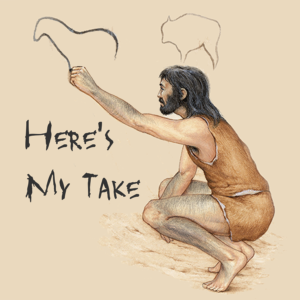
Your information is secure and private. You can cancel at any time.
So that’s why I can sing along with Country Roads, which I love to do! I always say I sing in the key of Bob Dylan — not a compliment to him!
This was a really fun and interesting blog and I learned a lot. Such a travesty that those great Black musicians were listened to, appreciated, and then segregated against. The movie The Green Book is a treatment of that very same thing.
Speaking of movies, I too liked A Complete Unknown. Chalamet did a good job and it was a good portrayal of those times. “For What It’s Worth” by Buffalo Springfield is my all-time favorite protest song. It has a lot of resonance for what’s “happening” today.
Thanks Paul. Love your blogs!
Paul,
You are amazing. I love reading your blogs. So much insight . Thank you again for sharing your lifes adventures. Andy
Having put a Coldplay live concert on my bucket list, I scored tix to see them in June at Empower Field. Hardly a good place to see a concert. And then found out I have a date conflict as I am scheduled to play the National Grass tennis Championships, for many years my favorite event.
I struggled with what to do..
Chris Martin and the band win out.